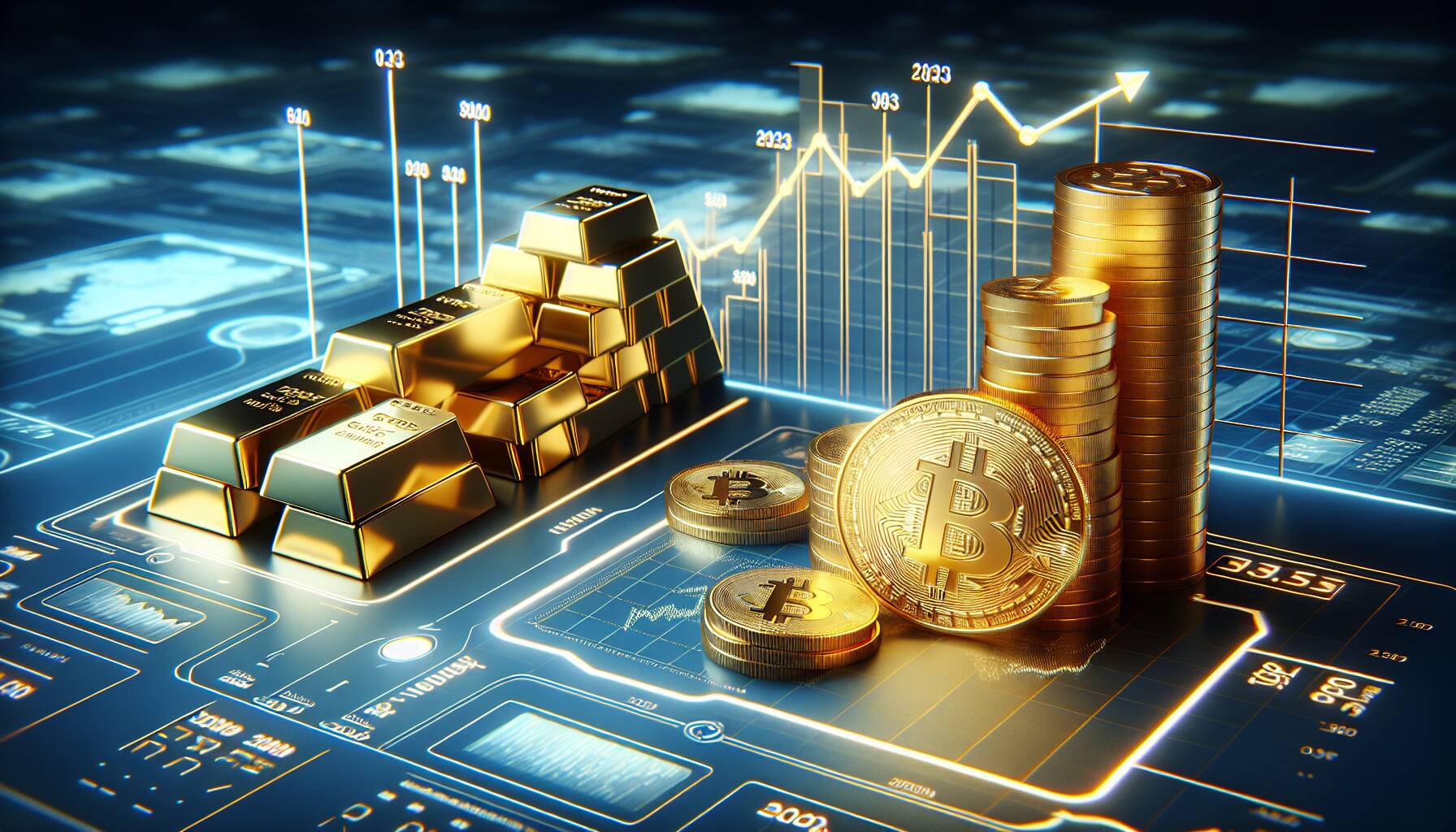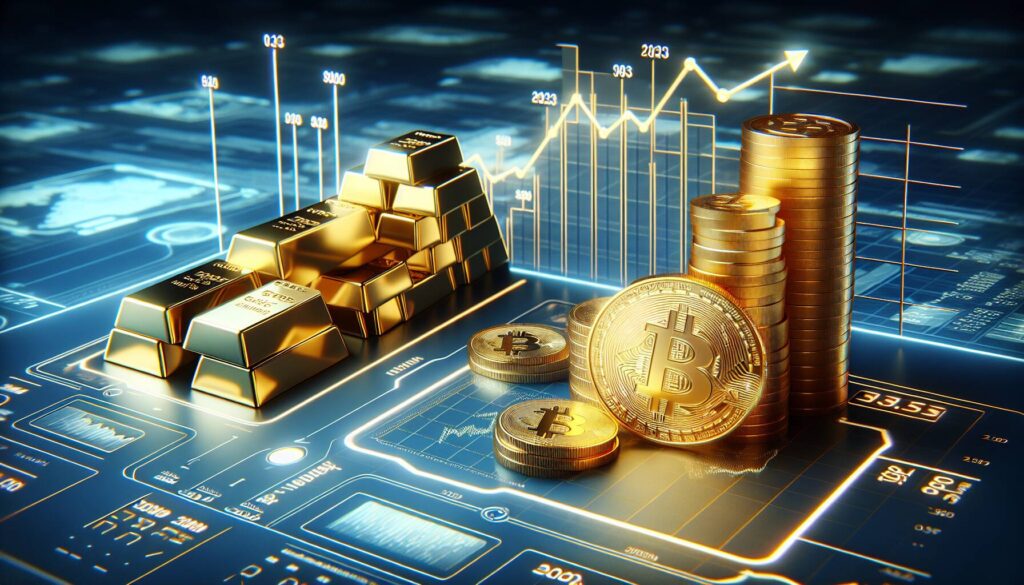This year has clearly been a rollercoaster for investors, especially when it comes to comparing gold and Bitcoin. Gold, the traditional safe haven asset, has surged an impressive 29%, significantly outpacing Bitcoin’s modest 3.8% gain. Despite this disparity, the interest in Bitcoin remains strong, particularly among institutional investors. Notably, BlackRock’s spot Bitcoin ETF, known as IBIT, has garnered around $6.96 billion in inflows since January, marking it as one of the most successful ETFs of the year. This success has propelled IBIT to become the sixth-largest ETF by net inflows, surpassing SPDR Gold Trust (GLD), which now sits in seventh place with $6.5 billion in inflows.
The ongoing enthusiasm for Bitcoin, often dubbed as “digital gold,” emphasizes a deeper institutional confidence in its long-term potential, despite recent fluctuations. While gold prices have been uplifted by various factors, such as international trade tensions and rising inflation concerns, Bitcoin hit its peak earlier this year in January before retreating over 10% from that level.
“To take in more cash in that scenario is really good sign for long term, and inspires confidence in our call that BTC ETFs will have triple gold’s aum in 3-5yrs,” said Eric Balchunas, Bloomberg’s senior ETF analyst.
This sentiment reflects a significant perspective within the cryptocurrency sector, suggesting that even as gold continues to shine, Bitcoin’s position in the investment landscape remains robust, inviting more investors to broaden their portfolios with digital assets.

Gold and Bitcoin Market Trends: Key Insights
The recent fluctuations in the prices of gold and Bitcoin (BTC) reveal significant trends in investment behavior and market confidence. Here are the key points to consider:
- Gold’s Price Surge: Gold has seen a remarkable increase of 29% this year, significantly outperforming Bitcoin’s 3.8% gain.
- Investor Interest in Bitcoin: Despite gold’s performance, investors are still eager to add Bitcoin to their portfolios.
- BlackRock’s Bitcoin ETF Success: The IBIT ETF has attracted a net $6.96 billion in inflows in 2023, ranking as the sixth-largest ETF.
- Gold ETF Comparison: The SPDR Gold Trust (GLD), the largest gold ETF, ranks seventh with $6.5 billion in inflows.
- Institutional Confidence in Bitcoin: The performance of IBIT suggests that institutions maintain a strong belief in Bitcoin’s long-term potential, undeterred by recent price declines.
- Geopolitical and Economic Factors: The rise in gold prices is linked to issues such as international trade disputes, inflation worries, and geopolitical tensions.
- Bitcoin Price Volatility: Despite reaching record highs earlier in the year, Bitcoin is currently over 10% below that peak.
- Forecasting Future Trends: Analyst Eric Balchunas predicts that Bitcoin ETFs could potentially surpass gold’s assets under management in the next 3-5 years.
“To take in more cash in that scenario is really good sign for long term, and inspires confidence in our call that BTC ETFs will have triple gold’s aum in 3-5yrs.” – Eric Balchunas
The relationship between these key points emphasizes the evolving dynamics of the investment landscape. Readers can consider how these trends might impact their financial decisions, particularly those interested in diversifying their portfolios with either gold or Bitcoin.
Gold vs. Bitcoin: Analyzing Investment Trends in 2023
The current year has been a notable one for precious metals and cryptocurrencies, particularly as the price of gold has experienced a remarkable surge of nearly 29%. This growth significantly outpaces the 3.8% gain enjoyed by Bitcoin (BTC), illustrating a stark contrast in performance between traditional and digital assets. Despite this disparity, Bitcoin remains an attractive option for investors, especially with BlackRock’s spot bitcoin ETF (IBIT) achieving remarkable success in attracting net inflows of approximately $6.96 billion since January, placing it as one of the top contenders in the ETF space.
Competitive Advantages of Bitcoin and BlackRock’s ETF
IBIT’s performance showcases a strong institutional appetite for Bitcoin, hinting at a robust belief in its long-term viability. This confidence appears undeterred even as Bitcoin’s price has dipped over 10% from its January peak. Bitcoin, often dubbed as “digital gold,” presents a variety of arguments for potential growth, particularly in an environment characterized by inflation and rising geopolitical risks. As investors seek avenues for diversification, Bitcoin’s allure as a high-risk, high-reward asset remains a compelling factor driving inflows into IBIT.
A Comparative Disadvantage for Gold ETFs
On the flip side, the SPDR Gold Trust (GLD) has seen a decrease in relevance, now ranking seventh in net inflows with $6.5 billion. While gold has historically been a safe haven during times of economic uncertainty, its recent performance may suggest that it faces challenges in capturing investor interest when competitive options like IBIT are on the rise. The recent influx into Bitcoin ETFs could further shift market focus away from gold, as younger investors seeking growth may prefer the potential upside presented by cryptocurrencies over traditional assets.
Target Audience Insights
Given these trends, new and existing investors may find themselves at a crossroads. Those looking for stability and protection against inflation might still lean towards gold, appreciating its traditional role as a financial bulwark. Conversely, investors with higher risk tolerance interested in innovative assets may capitalize on the momentum that Bitcoin is generating, especially institutions that view cryptocurrency as a strategic hedge or future cornerstone of their portfolios. However, such choices could create friction, particularly as traditionalists argue about the speculative nature of cryptocurrencies.
In conclusion, the ongoing rivalry between gold and Bitcoin highlights a pivotal moment in the investment landscape. Whether driven by security or the quest for higher returns, investors will continue to navigate these evolving dynamics, shaping the future of asset allocation in unique and potentially unpredictable ways.

















